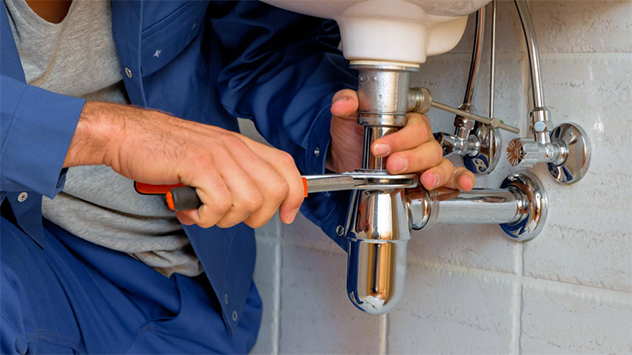Spotting Early Signs Of Plumbing Issues
Plumbing problems in a home rarely appear without warning. Slight hints usually pop up first, such as a slow-draining bathroom sink, the faint sound of water running when all taps are off, or the almost-ignored dripping of a kitchen faucet late at night. Homeowners who know how to spot these subtle signals gain valuable time to address issues before they grow more costly. Pay special attention to wet spots near walls and water fixtures, or odd stains forming on ceilings. Mold growth, musty odors, and a sudden spike in your monthly water bill are early warning signs of leaks or inefficient plumbing. A plumbing system is likely your house’s circulatory system—when something’s wrong, the symptoms often linger until they’re too big to ignore. Fortunately, services like affordable plumbing in Denver offer expert help to resolve issues quickly and cost-effectively, preventing minor concerns from becoming major repairs.
Recognizing these early red flags is not just for DIY enthusiasts. Anyone can watch out for little changes around the house. Taking note of new noises like banging pipes, rattling, or unexplained dripping sounds can help you act before disaster strikes. Don’t overlook areas beneath sinks, around toilets, and below water heaters. Even a tiny change in water pressure, a flickering pilot light on a water heater, or a foul smell from drains can provide essential clues about what to fix first. Proactive attention keeps your home safe, saves money, and brings homeowners peace of mind knowing they’re preventing emergencies before they start.
Essential Tools To Keep On Hand
Building a simple home plumbing toolkit can be a game-changer. It immediately empowers anyone to handle clogged sinks, leaky pipes, or wobbly faucets, minimizing stress and property damage. Homeowners should have a good plunger for flat drains (sinks and bathtubs) and flange toilet plungers. A couple of adjustable wrenches—one small, one larger—give you the flexibility to work on different-sized nuts and bolts. Add a pair of sturdy pipe wrenches, plumber’s tape (Teflon tape) for sealing threads, and a multi-bit screwdriver to reach into tight spaces.
DIY Essentials for Everyday Plumbing
- Plunger (keep both cup and flange types)
- Adjustable wrench and pipe wrench
- Plumber’s tape (Teflon tape for sealing)
- Drain snake or manual auger for deep clogs
- Bucket, microfiber rags, and rubber gloves for cleanup and safety
These tools can handle most simple plumbing fixes, saving you money on urgent call-outs. Keeping a compact kit accessible increases your confidence and helps you act immediately when problems arise. Even if you rarely need to use them, knowing they’re nearby means you’re prepared for surprises like minor leaks or the occasional overflow.
Simple Steps To Unclog Drains
Most clogged drains are caused by everyday debris—hair, bits of soap, grease, or food. The problem may start with a slow gurgle or a small pool of water collecting around the drain. Ignoring these early signs can lead to complete blockages and even damage to pipes or nearby surfaces. Fortunately, most clogs can be remedied with a plunger. Fill the basin with water to create suction, then apply several firm, steady plunges. If the water starts to drain, you’re in luck.
Natural De-Clogging Steps
- Pour a generous amount of hot (not boiling) water down the clogged drain to loosen the buildup.
- Add half a cup of baking soda, let it sit for a minute, then pour a cup of white vinegar and quickly cover the drain. The chemical reaction helps break up gunk.
- Wait five to ten minutes as it bubbles, then flush again with hot water to clear residue.
If that doesn’t work, remove the drain cover and as much debris as possible—often, a drain snake or even a bent wire hanger does the trick. As tempting as reaching for commercial drain cleaners may be, they can weaken pipes and hurt the environment when used excessively. Save those aggressive chemicals for absolute emergencies, and try safer methods first for the health of your plumbing and your family.
How To Find And Stop Hidden Leaks
Hidden leaks rarely announce themselves until you face warped cabinetry, buckled floors, or the unmistakable smell of mildew. The earliest hint is often an unexpected rise in your water bill or subtle signs like paint peeling near baseboards. Make it a habit to check under kitchen and bathroom sinks, around toilets, at the water heater base, and along the walls—especially if you notice dampness where it shouldn’t be.
When you suspect a leak, try to locate its source. Once found, immediately shut off the closest water valve—or if necessary, use your home’s main shutoff to prevent further water loss. Dry the area as best as possible, then wrap the leak with plumber’s tape or install a temporary pipe patch. While these simple repairs can stop water in its tracks, they are only a short-term solution; ongoing hidden leaks demand professional intervention to avoid mold, rot, and costly structural damage. Vigilant habits and periodic checks can keep small leaks from ballooning into bigger, more expensive repairs.
Quick Fixes For Burst Or Frozen Pipes
Winter threatens pipes in colder regions or unheated parts of the house, like basements or crawl spaces. When water inside pipes freezes, it expands and can lead to bursts, causing floods and substantial property damage. If your water stops flowing from a specific faucet, or you hear strange clanking, suspect a frozen pipe. Act quickly: turn off your home’s main water supply, and open the affected faucet to relieve pressure.
Safe Ways To Thaw Frozen Pipes
- Use towels soaked in hot water and wrap them around the frozen section.
- Plug in a hairdryer and gently warm the pipe from the end closest to the faucet, moving slowly along its length.
- A small space heater aimed at a frozen area (keep a safe distance) also works well.
Never use a torch or open flame. If a pipe bursts, quickly contain the leaking water with buckets and towels before calling for professional repair. Temporary solutions, like a pipe repair clamp or rubber patch, will buy you time but aren’t long-term fixes. Learning to react minimizes damage and ensures your house bounces back faster from unexpected plumbing crises.
Troubleshooting Water Heater Problems
A sudden loss of hot water can make daily routines difficult and unpleasant. Check the basics first if you get a cold shower or hear strange noises from the water heater. Sometimes, it’s as simple as a tripped circuit breaker or a button that needs resetting. Many water heaters have a reset switch near the thermostat; pushing it can bring the heater back to life if the problem is electrical.
For gas models, double-check that the pilot light is burning. If it’s out, fitting the manufacturer’s or relighting it—often, it’s a safe, straightforward process. Another common culprit is sediment buildup at the bottom of the tank. Over time, this layer reduces efficiency and can create rumbling sounds or fluctuating water temperatures. Flushing the tank once a year removes this buildup and improves overall performance. Proactive maintenance, like checking settings, inspecting drips, and listening for odd noises, saves energy and frustration throughout the year.
Knowing When To Call For Help
No one likes to admit defeat when DIY repairs fall short. Yet, knowing your limits and seeking expert help can save significant time and prevent minor mishaps from escalating. Water stains spreading across ceilings, persistent sewage odors, or a recurring clog that never truly goes away are all signs the problem is beyond a typical toolkit. Major leaks, continual water pressure loss, or issues involving pipes in hard-to-reach or hidden locations also call for immediate professional intervention.
Skilled plumbers use advanced diagnostic tools and years of experience to solve complex issues effectively. In many cases, calling an expert early prevents hundreds—if not thousands—of dollars in avoidable repairs. Recognizing when a problem is out of your depth means protecting your property and keeping your household safe.
Tips To Prevent Future Plumbing Disasters
- Don’t pour greasy liquids down your kitchen sink; use a separate container and dispose of them responsibly.
- Add mesh screens to catch hair, bits of food, and debris in bathroom and kitchen drains.
- Book a professional plumbing inspection annually for peace of mind.
- During cold snaps, keep the heat on and open cabinet doors under sinks so warm air can circulate to exposed pipes.
- Test home water pressure occasionally—you want it steady, not excessive, to avoid wear on your system.
Small efforts in prevention make a world of difference over time, drastically lowering the risk of sudden failures or destructive water leaks. Consistency is key; form proactive habits and stay on top of routine maintenance. Further reading, such as The New York Times’ coverage of plumbing safety, offers additional insight into the latest trends and technology to help homeowners protect their investments. Choosing to stay informed and ready means fewer emergencies and a greater sense of comfort at home.



